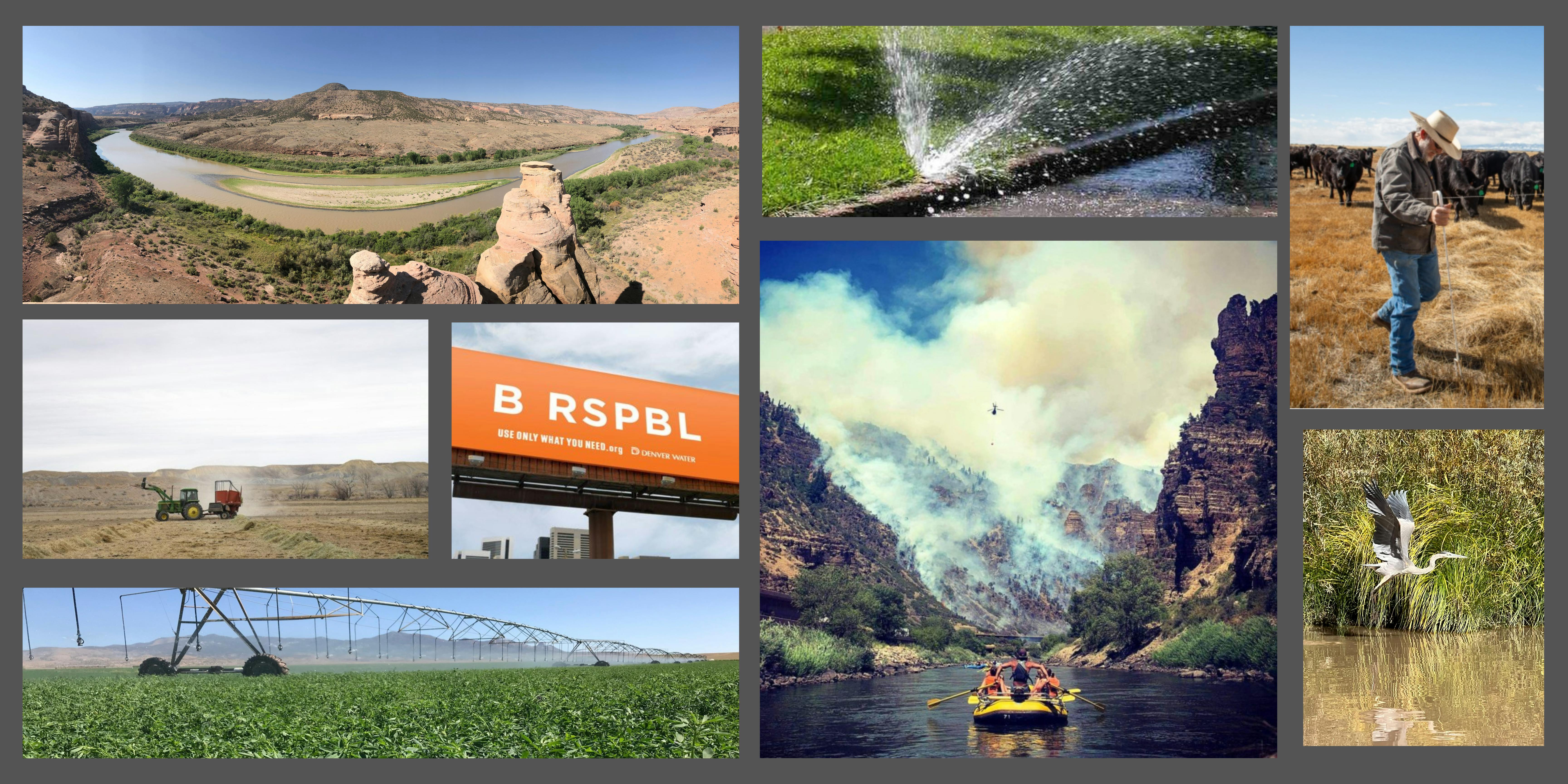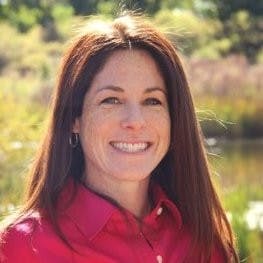Practical Drought Solutions Open Forum
Share Innovation
Please share your practical drought solutions with us! Use the "Share Innovative Solutions" tool below to share your ideas to help develop a menu of tools to help those who are struggling and provide alternatives to the least desirable outcomes.
Stand In Their Shoes
The immense challenges presented by drought and increasing water scarcity affect all Coloradans. Farms, ranches, cities and watersheds all have different water needs, and different types of hard decisions to make during drought. Read our drought stories below to learn how drought affects different water users and join the conversation about practical ways to address these challenges.
View Drought Session at CWC Annual Convention
Many thanks to Colorado Water Congress and our panelists for helping to share the stories and personal experiences of drought across Colorado's water sectors. Check out the recording on Vimeo. (Drought vignettes begin a 1:01:30)
Share Innovation
Please share your practical drought solutions with us! Use the "Share Innovative Solutions" tool below to share your ideas to help develop a menu of tools to help those who are struggling and provide alternatives to the least desirable outcomes.
Stand In Their Shoes
The immense challenges presented by drought and increasing water scarcity affect all Coloradans. Farms, ranches, cities and watersheds all have different water needs, and different types of hard decisions to make during drought. Read our drought stories below to learn how drought affects different water users and join the conversation about practical ways to address these challenges.
View Drought Session at CWC Annual Convention
Many thanks to Colorado Water Congress and our panelists for helping to share the stories and personal experiences of drought across Colorado's water sectors. Check out the recording on Vimeo. (Drought vignettes begin a 1:01:30)
-
Farming and Ranching Drought Vignette
almost 4 years agoYou need to be signed in to add your comment.
Sign InIt’s early in the season (May/June) and you are operating a cow-calf operation on the Western Slope. Most years, you irrigate around 400 acres of grass hay and often you producing 2 tons per acre, which is on the high end of yield and pretty good. You also have around 400 head of cattle.
Beginning in May, those cattle spend about half the year on BLM property grazing. During that time, you are irrigation and haying the fields. You bring the cattle back in the fall, and in most years, the cattle are able to forage on the regrowth in the hayfields and you don’t have to touch any of the bales of hay you harvested until early next year. A single cow eats about 25 lbs (this can depend on the forage, if the cow is pregnant, etc) a day, so 80 cows can go through 1 ton of hay daily. You have 400 cows, so when you are feeding them hay, that’s 5 tons a day. But in an average year, you are producing anywhere near 800 tons of hay. This means you usually have more forage than you need and have been able to stockpile hay the past few years.
It’s early 2021 and 2020 was already brutal. Cattle prices dropped to the point that many of your cattle are barely even breaking even at auction. It’s May and all indicators are showing that runoff and water availability throughout the summer are going to be less than you have seen in years. The forage on the BLM property your cattle graze is 20-30% less than usual. Due to the dry conditions of 2020, you have already used most of the hay stockpiled the past few years. With what hay you have left, you will likely need during this summer to supplement what forage the cattle can eat. It is very likely you will not be producing anywhere near the amount of forage you will need to feed your current herd size.
As early as July, you sell of about 50 head of cattle. These are mainly cows that have some minor issue or haven’t been producing as well as the other cattle. With the current price of cattle, the money you make is just around break even the cost to produce the cattle. You spend the summer having to move cattle on BLM property. Ponds that normally provide drinking water for cattle have dried up and you don’t want cattle to overgraze what forage exists. You are spending a lot of the summer on horseback moving cows. Sometimes you are even feeding hay, the last of what you have stored up over the years. Every bale of hay you are feeding cattle right now is lost money. That is hay you need for next year.
Irrigation and growth in the hay meadows isn’t growing much better. Some fields are getting very little water and the ground is just so dry. By the time you are done with harvest, you have about 400 tons of hay. Per acre, you only yielded about 1.5 ton and quite a few of your fields didn’t produce much of anything because you couldn’t even get water to them. From surveying the soil and your fields, there is virtually no subsoil moisture, so it is likely there will be very little regrowth for cattle to graze this fall. You will have to feed them hay directly again. More labor and less return.
It’s late summer 2021, you have a herd of 350 cattle now after culling some cattle earlier in the year. Since everyone has been culling cattle the past two years and herd sizes have been decreasing the price of cattle has increased a bit and will likely increase next year. You aren’t losing money anymore, and will be covering your costs, and making some profit. However, you really only have enough forage to feed your current herd size for 90 – 100 days.
You will not be harvesting any more hay for almost a year from now. Right now, you either buy hay or continue to destock your herd, or both. In most places on the Western Slope. Hay is running $250 - $275 a ton. If you want to bring hay from Eastern Colorado, shipping fees are an additional $100 per ton. It will cost you at least $1,000 a day to feed your herd. You are not sure what the snowpack and water availability will be next year. You don’t know if hay production will bounce back. It could. However, you know also know that it will take several years to build your heard back to size. Even if prices increase, your profit will be less for several years than the profit you were making before the drought.
What do you do?
Go to discussionThank you for your contribution!
Help us reach out to more people in the community
Share this with family and friends
No thanks -
Tribal Farming Enterprise Drought Vignette
almost 4 years agoYou need to be signed in to add your comment.
Sign In
The 2021 Drought is threatening the economic viability of the 7,700 acre Ute Mountain Ute Tribe Farm and Enterprise for the first time in its 28 years of operation:
The 10% water supply in 2021 allowed for the full operation of only 8 pivots (611 acres) of corn with 102 center pivot fields fallowed early in the season.
Farm employment was cut by 50% from 40 to 20 employees
High quality dairy alfalfa is the most profitable and water intensive crop. With alfalfa fields fallowed, crop revenues plunged resulting in projected losses in 2022 of Two Million Dollars.
The Bow and Arrow Cow Herd was cut from 680 bred cows to 580 with no access to grazing on crop aftermath. Slide 3
The fallowed pivot fields totaling 6,000 acres will take a least 2 years to re-cultivate and replant.
The Tribal Farm is a centerpiece of the Ute Mountain Ute portion of the Colorado Ute Indian Water Rights Settlement ratified by Congress in 1988. The Tribe subordinated 1868 Winter’s Rights claims on the Mancos and Dolores Rivers to get the 7,700 acre irrigation allocation from the Reclamation Dolores Project as well as clean water for drinking and economic development for the first time in the Tribe’s history. To protect our farm, for which the Tribe gave so much, we have taken the following steps:
The Tribal Farm devoted limited water to 8 pivots in 2021 to producing corn for the Bow and Arrow Corn Mill, which was able to keep all 12 employees and continue to grow this value-added business. Slide 5
The Farm secured funding from the NRCS to replace end of life pivots with 17 highly efficient state of the art pivots, and re-nozzling of 31 pivots in ‘21 and ‘22, providing work for remaining field crews. The crews are also installing micro-hydro units in field laterals to power headquarters assisted by the Colorado Energy Office
The Farm generated $1.5 million in non-crop income (crop insurance, drought payments, covid payments etc.) in 2021, which combined with income from crops grown in 2020 to carry $2 million in cash into 2022 to replant 3,700 acres and manage the remaining 4,000 fallowed acres.
The Tribe is working with Reclamation to exercise a provision of the Water Rights Settlement to authorize Reclamation to assume O&M costs, totaling $818K in 2021 and 2022, using a “viability formula” to determine when the Farm will reassume these costs.
Strategies Going Forward:
Adjust cropping to match water availability
Grow enough corn to support the Bow and Arrow Corn Mill
Grow triticale as a low water use forage for cows
Pilot alternative water saving crops e.g., certified hemp seed.
Continue to pursue pivot and delivery system efficiency improvements via USDA and Infrastructure Bill funding
Meet viability criteria and re-assume O&M Payments
What would you do? Are there innovative drought solutions you could come up with?
Thank you for your contribution!
Help us reach out to more people in the community
Share this with family and friends
No thanks -
Recreational Drought Vignette
almost 4 years agoYou need to be signed in to add your comment.
Sign In We are never in a drought alone. All of us are residents of a watershed. My family chose the Colorado River watershed in the Grand Valley as home -because we are river people. In 2019, the Colorado River hit high-water. In 2020, you could walk across the boats, boards and tubes on the River with the community seeking river time during the pandemic. Outfitters were busy. Water-based recreation brings $18 billion annually to Colorado. However, 2021 held a painful story.
We are never in a drought alone. All of us are residents of a watershed. My family chose the Colorado River watershed in the Grand Valley as home -because we are river people. In 2019, the Colorado River hit high-water. In 2020, you could walk across the boats, boards and tubes on the River with the community seeking river time during the pandemic. Outfitters were busy. Water-based recreation brings $18 billion annually to Colorado. However, 2021 held a painful story.With intensifying drought and historic wildfires, my river and life changed. In 2021, extremely low flows and high water temperatures threatened fish in the Upper Colorado River and made friends and family river trips impossible. Parallel stories played out on the Yampa and Dolores Rivers too.
Late summer brought a stop to river family visits. Rains on the Grizzly Creek burn scar mobilized debris flows which closed I-70, nearly dammed the river, and mucked water quality. Down watershed I sadly like so many other community members, ended paddling trips on the Colorado because the turbidity and low flows were just unbearable. The joy was lost.
Not only were there fewer recreation opportunities, wildlife and riparian health faded. I watched Great Blue Herons fish and miss repeatedly due to poor water conditions. By end of summer riverside vegetation singed and cottonwoods and willows dropped their leaves early.
Drought and wildfire impacts took quality of life, river recreation, riverscapes and local economies. When the watershed is impacted by drought, we all are too.
Thank you for your contribution!
Help us reach out to more people in the community
Share this with family and friends
No thanks -
Municipal Drought Vignette
almost 4 years agoYou need to be signed in to add your comment.
Sign InIt's been 20 years since the 2002 drought when half the supply for 1.5 million people was dangerously low and a massive fire posed ongoing threats to the system.
Faced with these challenges and a population that's grown by more than 800,000, a multipronged solution has included investments in storage
 , environmental partnerships to protect watersheds, water reuse and water conservation. These investments continue, costs continue to rise and water providers have a budget each year that's dependent on revenue from rate payers (customers).
, environmental partnerships to protect watersheds, water reuse and water conservation. These investments continue, costs continue to rise and water providers have a budget each year that's dependent on revenue from rate payers (customers). Making a drought declaration is not just a water decision but a financial one that, once enacted, may or may not leave water in the native basin depending on when water is actively pumped. In 2021, restrictions weren't declared but if 2022 is extremely dry the utility will have to consider this option.
What would you do?
Thank you for your contribution!
Help us reach out to more people in the community
Share this with family and friends
No thanks
Who's Listening
-
Deputy Section Chief - Water Supply Planning, Climate, Conservation & Drought
DNR - CWCB
-
Senior Water Efficiency Specialist
Email kevin.reidy@state.co.us -
CWCB Program Manager & Roundtable Liaison
SS -
DS
-





